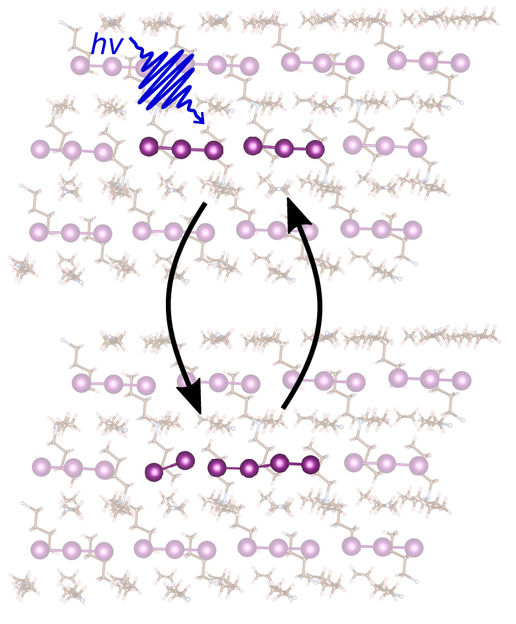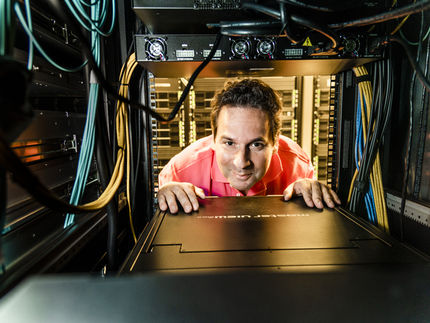Pinball at the atomic level
Scientists from the Max Planck Institute for the Structure and Dynamics of Matter (MPSD) at CFEL (Center for Free-Electron Laser Science) in Hamburg and of the University of Edinburgh have currently discovered a new intermediate state for the photodissociation of triiodide anion, a classic textbook reaction.

The picture illustrates the photodissociation of triiodide initiated by a laser pulse and the secondary reaction leading to the novel 4-atom intermediate, followed by the recombination reaction.
Image from R. Xian et al. Nat. Chem. (2017), DOI: 10.1038/nchem.2751
The photodissociation of triiodide anion ([I₃]⁻) is a classic textbook reaction that has been extensively studied both in solution and in gas phase. However, probing the ultrafast dynamics of this reaction in the solid state was proven challenging due to partial reversibility of the reaction and its sensitivity to experimental conditions. Due to an improved sample handling a team of scientists from the MPSD at CFEL and the University of Edinburgh has currently discovered a new reaction intermediate, the tetraiodide radical anion ([I₄]• ⁻), formed as a result of the unique ordering of [I₃]⁻ in the crystal lattice to direct the dissociating I atom - in a process reminiscent of a quantum Newton's cradle.
In the solution phase, the triiodide anions photodissociates predominantly into iodine radical ([I]•) and diiodide ([I₂]•⁻) radicals. The surrounding solvent plays a passive role in the inertial confinement of the reaction products that ultimately undergo geminate and non-geminate recombination. In contrast, a dramatically different behavior was found in the ordered ionic lattice of tetra-n-butylammonium triiodide crystals. Here, the local geometry constrains the reaction and, hence, the primary photoproduct, iodine radical ([I]•), is guided by the lattice to form a bond with an adjacent ([I₃]⁻), giving rise to a secondary reaction product, the tetraiodide radical anion ([I₄]• ⁻), not described before for this reaction. As shown in the figure, the reactants are literally aligned in the lattice to form this four-atom intermediate. “The dissociated iodine atoms collide in a quantum type of a Newton’s cradle with other triiodide molecules to form this novel reaction product” explains Dwayne Miller, and he adds “most importantly, we have demonstrated that lattice can coherently direct the reaction pathway of solid-state photochemistry on femto- to picosecond time scales.”
This phenomenon was only observable thanks to new sample-handling, data collection and analysis techniques developed at the MPSD together with theoretical calculations carried out at the University of Edinburgh to support the electronic and vibrational assignments of the various reaction participants, which enabled the most detailed resolution to date of the reaction intermediates as well as the coherent modes driving the triiodide photodissociation reaction. “These observations provide a different conceptual framework to think about reaction processes and may point the way in how to couple chemical systems to a bath as a means to increase the length scales under chemical control”, concludes Miller.
Original publication
Other news from the department science

Get the chemical industry in your inbox
From now on, don't miss a thing: Our newsletter for the chemical industry, analytics, lab technology and process engineering brings you up to date every Tuesday and Thursday. The latest industry news, product highlights and innovations - compact and easy to understand in your inbox. Researched by us so you don't have to.





























































